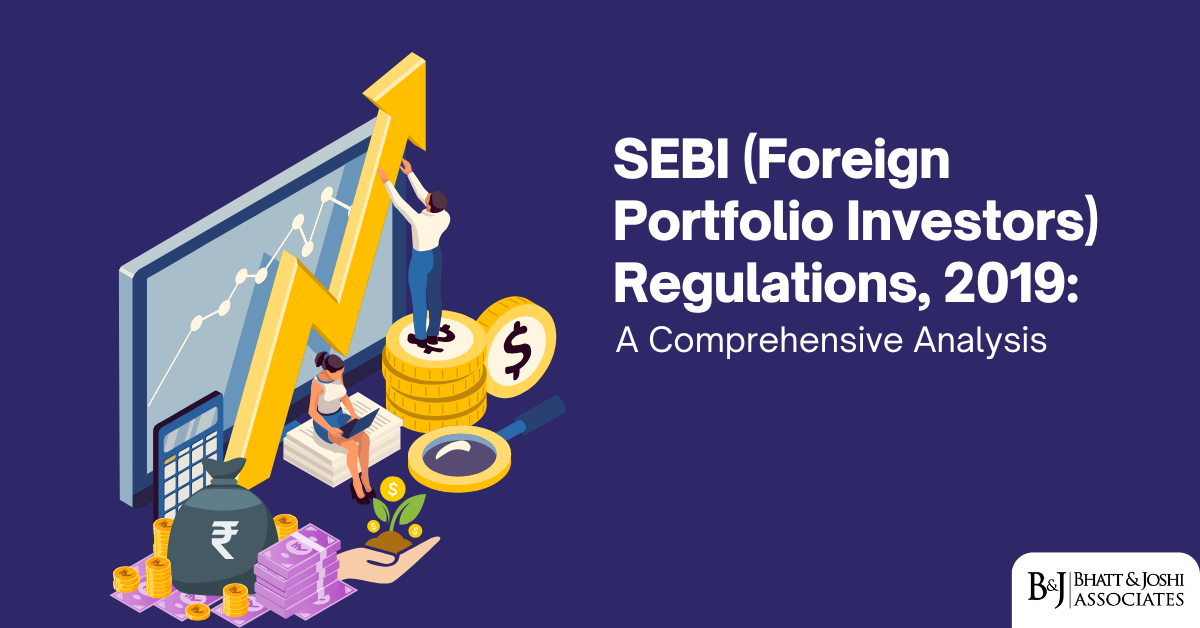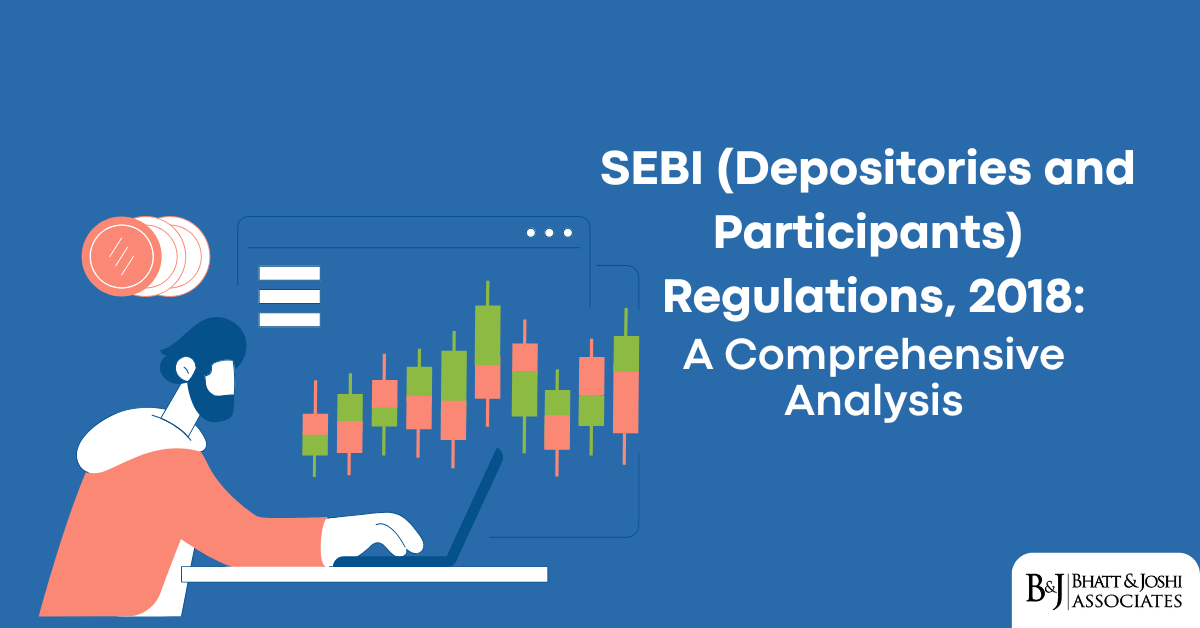Introduction
The Securities and Exchange Board of India (SEBI) introduced the Foreign Portfolio Investors (FPI) Regulations, 2019 as a significant evolution in India’s approach to regulating foreign investment in its capital markets. These regulations, which replaced the 2014 framework, represent a deliberate effort to simplify registration procedures, rationalize investment conditions, and enhance compliance standards for foreign investors. The 2019 regulations emerged from SEBI’s recognition that while foreign capital is vital for market development, its flow must be managed through a balanced regulatory framework that ensures market integrity without imposing excessive barriers to entry.
The regulations marked a pivotal moment in India’s journey toward greater integration with global financial markets while maintaining appropriate safeguards for financial stability and national security. They reflected lessons learned from the earlier regulatory frameworks and incorporated feedback from various stakeholders, including global investors, domestic market participants, and regulatory counterparts in other jurisdictions.
Historical Evolution: From FII to FPI Framework
India’s regulatory approach to foreign investment in securities markets has evolved significantly over three decades. The journey began with the introduction of the Foreign Institutional Investors (FII) Regulations in 1995, which established the first formal framework for foreign entities to invest in Indian securities markets. This initial framework, while groundbreaking at the time, was designed for a relatively limited set of institutional investors and became increasingly inadequate as India’s financial markets matured.
A significant transformation occurred in 2014 with the introduction of the Foreign Portfolio Investors Regulations, which consolidated multiple foreign investment routes (FIIs, Qualified Foreign Investors, and sub-accounts) into a unified FPI framework. This consolidation represented an important step toward regulatory simplification, but implementation challenges emerged as the market evolved.
The SEBI (FPI) Regulations 2019 built upon this foundation, addressing gaps and inefficiencies identified in the 2014 framework. SEBI Chairperson Ajay Tyagi highlighted this evolutionary approach when introducing the new regulations, stating: “The 2019 FPI regulations represent not a departure but a refinement of our approach to foreign investment, incorporating lessons from five years of implementing the previous framework and addressing evolving market needs.”
Registration Categories and Requirements Under Chapter II
Chapter II of the regulations fundamentally restructured the registration framework for FPIs. Regulation 5(a) consolidated the previous three-category system into two categories, stating that “the applicant shall seek registration in either of the following categories: (i) Category I foreign portfolio investor, which shall include Government and Government related investors such as central banks, sovereign wealth funds, international or multilateral organizations or agencies including entities controlled or at least 75% directly or indirectly owned by such Government and Government related investor(s); (ii) Category II foreign portfolio investor, which shall include all the investors not eligible under Category I.”
This consolidation significantly simplified the registration process, particularly for well-regulated entities that previously fell into Category II under the 2014 regulations. The new framework established a more streamlined approach, with Regulation 7(1) specifying that “an application for grant of certificate as foreign portfolio investor shall be made in Form A of the First Schedule and shall be submitted to any designated depository participant.”
The regulations established a principles-based eligibility criteria focused on the applicant’s regulatory status, professional competence, and market credibility rather than rigid categorization based on entity type. This approach aligned with global best practices while providing SEBI with sufficient oversight to ensure market integrity.
Investment Conditions and Restrictions Under Chapter V
Chapter V established a comprehensive framework of investment conditions and restrictions designed to balance market accessibility with prudential concerns. Regulation 20(1) articulated the fundamental investment permissions, stating that “a foreign portfolio investor may invest in the following securities: (a) shares, debentures and warrants issued by a body corporate; (b) units of schemes launched by mutual funds; (c) units of a scheme floated by a Collective Investment Scheme; (d) derivatives traded on a recognized stock exchange; (e) units of real estate investment trusts, infrastructure investment trusts and units of alternative investment funds; (f) Indian Depository Receipts; (g) government securities; (h) commercial papers issued by an Indian company; (i) such other securities as may be specified by the Board.”
The regulations also addressed concentration limits, with Regulation 20(7) stipulating that “the investment by a foreign portfolio investor shall not exceed ten percent of the total paid-up equity capital on a fully diluted basis or paid up value of each series of debentures or preference shares or share warrants issued by an Indian company.”
These provisions were designed to provide FPIs with broad market access while preventing excessive concentration and ensuring that foreign investments contribute to market development rather than creating stability risks.
General Obligations and Code of Conduct
Chapters III and IV established comprehensive standards for FPI conduct and operations. The code of conduct under Regulation 9 mandated that FPIs “shall observe high standards of integrity, fairness, and professionalism” in all their dealings in the Indian securities market. It further required that FPIs “act in a fiduciary capacity with respect to their clients” and “ensure clear segregation of its own assets and operations from those of its clients.”
Regulation 13 addressed the critical issue of information disclosure, requiring FPIs to “promptly inform the Board and designated depository participant in writing of any material change in the information previously furnished.” This provision ensured that regulators maintained current information about FPIs, enabling effective oversight.
These provisions collectively established a principles-based governance framework that emphasized integrity, transparency, and responsibility while avoiding excessively prescriptive requirements that might impede legitimate investment activities.
KYC Requirements and Beneficial Ownership Disclosure
Chapter VI introduced refined approaches to Know Your Client (KYC) requirements and beneficial ownership disclosure, addressing key challenges that had emerged under the previous framework. Regulation 22(1) established a risk-based approach to KYC, stating that “the designated depository participant shall carry out necessary due diligence and obtain appropriate declarations and undertakings from the applicant to ensure compliance with Prevention of Money Laundering Act, 2002 and rules and regulations prescribed thereunder.”
A particularly significant provision addressed beneficial ownership disclosure, with Regulation 22(3) stating that “an entity shall not be allowed to invest in India, where the investment manager is not appropriately regulated and is not itself registered as an FPI, or where the entity does not maintain satisfactory records of identity of each of its beneficial owners.”
These requirements were further clarified in 2020 through SEBI circular SEBI/HO/IMD/FPI&C/CIR/P/2020/177, which stated: “For the purpose of identification of beneficial owners, FPIs shall follow materiality threshold for identification of beneficial owners based on their category as prescribed in the Prevention of Money Laundering (Maintenance of Records) Rules, 2005 (PMLA Rules).”
This alignment with global anti-money laundering standards represented an important evolution in India’s approach to beneficial ownership disclosure, balancing legitimate privacy concerns with the need for transparency to prevent illicit financial flows.
Landmark Cases Shaping the Regulatory Landscape
Aberdeen Asset Management v. SEBI (2018)
This case, though decided under the 2014 regulations, established principles that influenced the 2019 framework. Aberdeen challenged SEBI’s interpretation of registration requirements for investment managers with multiple funds.
The SAT ruling emphasized a substance-over-form approach, stating: “The registration framework should focus on the substantive regulatory status of the applicant rather than rigid technical classifications. Where an investment manager is appropriately regulated in its home jurisdiction, a more streamlined approach to the registration of its managed funds is warranted.”
This principle was incorporated into the 2019 regulations through the simplified two-category system and the emphasis on the regulatory status of the applicant rather than technical entity classifications.
HSBC Global Asset Management v. SEBI (2020)
This case addressed the interpretation of investment restrictions under the 2019 regulations, particularly regarding sectoral caps and group-level limits. HSBC challenged SEBI’s calculation methodology for determining compliance with investment limits.
The SAT ruling clarified the application of investment restrictions, stating: “The investment restrictions under Regulation 20 must be interpreted in light of their protective objective while avoiding unnecessary impediments to legitimate investment activities. Where multiple FPIs are managed by the same investment manager but represent distinct beneficial owners, their holdings should not be aggregated for the purpose of investment limits unless there is evidence of coordinated investment activity.”
This ruling provided important guidance on the implementation of investment restrictions, ensuring they serve their intended prudential purpose without imposing undue constraints on diversified asset managers.
Oppenheimer Developing Markets Fund v. SEBI (2016)
This landmark case, though preceding the 2019 regulations, significantly influenced the approach to beneficial ownership disclosure. Oppenheimer challenged SEBI’s requirements for detailed disclosure of all underlying beneficial owners, arguing this was impractical for widely-held investment funds.
The SAT ruling balanced transparency with practicality, stating: “Beneficial ownership disclosure requirements must serve their intended purpose of preventing market manipulation and money laundering while remaining practical for legitimate investment vehicles with diverse ownership. A risk-based approach that focuses on controlling ownership rather than exhaustive enumeration of all economic interests better serves this balance.”
This balanced approach was reflected in the 2019 regulations’ risk-based approach to KYC and beneficial ownership disclosure, which focused on material ownership rather than exhaustive disclosure of all economic interests.
Impact and Comparative Analysis
The SEBI (FPI) Regulations 2019 have significantly influenced foreign investment flows into India’s capital markets. Data from SEBI indicates that the number of registered FPIs increased from approximately 9,400 in 2019 to over 10,700 by 2021, with corresponding growth in investment flows. This growth reflects the improved accessibility created by the streamlined registration process and clearer investment conditions.
Compared to emerging market peers, India’s approach to foreign portfolio investment regulation represents a middle path between excessive openness and restrictive controls. While China has gradually liberalized its Qualified Foreign Institutional Investor framework, it maintains more restrictive approaches to investment limits and capital repatriation than India. Brazil offers greater flexibility in certain aspects but imposes higher taxation on foreign investments. India’s framework has established a balance that promotes investment while maintaining appropriate safeguards.
The enhanced KYC and beneficial ownership requirements have aligned India with global standards while addressing legitimate concerns about market manipulation and round-tripping. The risk-based approach has proven more effective than the previous one-size-fits-all model, providing greater scrutiny where warranted while avoiding unnecessary impediments for well-regulated entities.
Conclusion
The SEBI (Foreign Portfolio Investors) Regulations, 2019 represent a significant milestone in India’s approach to regulating foreign investment in its capital markets. By simplifying registration procedures, rationalizing investment conditions, and enhancing compliance standards, the regulations have created a more conducive environment for foreign portfolio investments while maintaining appropriate safeguards for market integrity and financial stability.
The evolution from the earlier FII framework to the current SEBI (FPI) Regulations 2019 reflects India’s growing sophistication in financial market regulation and its commitment to greater integration with global capital markets. As India continues to emerge as a significant investment destination, the balanced approach embodied in these regulations will remain crucial for attracting global capital while ensuring that such investments contribute positively to the country’s economic development.
References
- Securities and Exchange Board of India (SEBI) (2019). SEBI (Foreign Portfolio Investors) Regulations, 2019. Gazette of India, Part III, Section 4.
- Securities Appellate Tribunal (2018). Aberdeen Asset Management v. SEBI. SAT Appeal No. 154 of 2018.
- Securities Appellate Tribunal (2020). HSBC Global Asset Management v. SEBI. SAT Appeal No. 237 of 2020.
- Securities Appellate Tribunal (2016). Oppenheimer Developing Markets Fund v. SEBI. SAT Appeal No. 112 of 2016.
- SEBI (2020). Circular on Operational Guidelines for FPIs and DDPs pursuant to the FPI Regulations. SEBI/HO/IMD/FPI&C/CIR/P/2020/177.
- SEBI (2021). Annual Report 2020-21. Chapter on Foreign Portfolio Investment.
- Ministry of Finance (2019). Report of the Working Group on Foreign Investment in India.
- Reserve Bank of India (2020). Report on Foreign Exchange Management in India.
- International Organization of Securities Commissions (IOSCO) (2018). Report on Cross-Border Regulation of Securities Markets.
- Financial Action Task Force (FATF) (2019). Guidance on Beneficial Ownership for Legal Persons.













